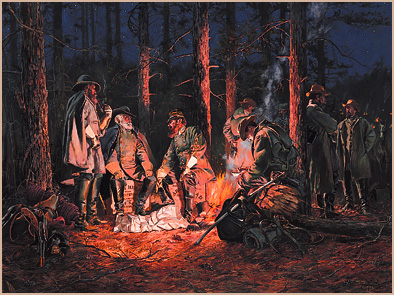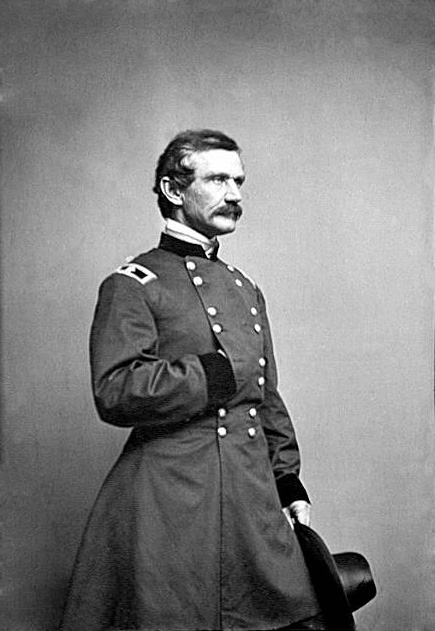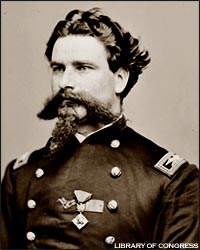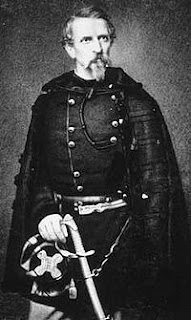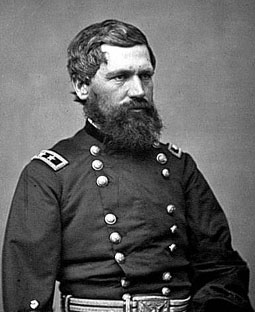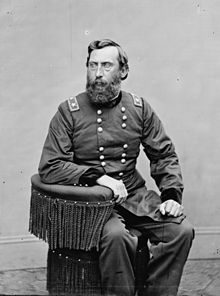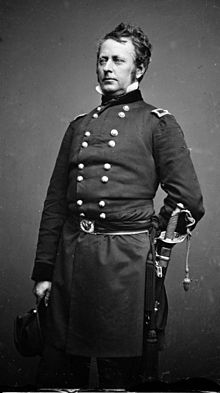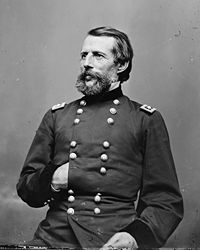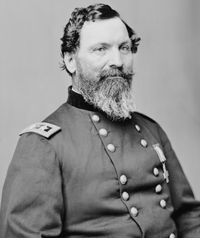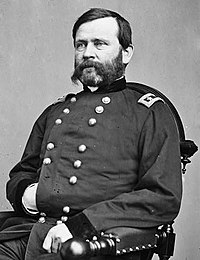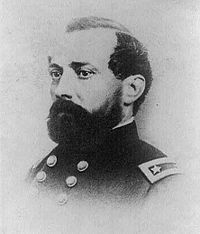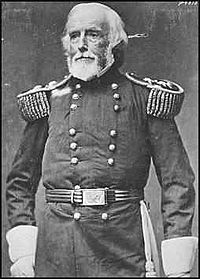Chapter Four
"I mean to bag the lot"
The Battle of the Rappahannock
From “A Thunderbolt on the Battlefield – the Battles of Philip Kearny: Volume II” by Professor Kearny Bowes
MacArthur University Press 1960
“The scene at the Station was chaotic. There were large numbers of wounded milling about, and a disturbing number of what were obviously skulkers. It was a difficult scene to make sense of, particularly because of the dearth of senior officers present. However Kearny, accompanied by Hooker, found Christopher Augur, commander of a division in Banks Corps, sitting on the porch of the Bowen House, having wounds to both his right arm and chest sown up (General Augur had been “touched” by five separate shell fragments but only the wound to his right arm was serious). Augur was able to give the generals a sense of the day's events…"
From “Battle of the Rappahannock” by Roger Galton
Osprey 2003
“From north to south Pope’s dispositions had been:
1. Beverly Ford
1.1 Bayard’s Cavalry Brigade (minus Duffie’s regiment)
1.2 Schurz’s Division of I Corps with Franz Sigel
1.3 Schenck’s Division of I Corps
2. Rappahannock Station
2.1 Duffie’s Cavalry Regiment
2.2 Augur’s Division of II Corps with Nathaniel Banks and John Pope
2.3 William’s Division of II Corps
2.4 Von Steinwehr’s Division of I Corps
3. Norman’s Ford
3.1 King’s Division of III Corps
3.2 Ricketts’ Division of III Corps with Irvin McDowell
3.3 Reynolds’ Division of II Corps
4. Kelly’s Ford
4.1 Buford’s Cavalry Brigade
From “A Thunderbolt on the Battlefield – the Battles of Philip Kearny: Volume II” by Professor Kearny Bowes
MacArthur University Press 1960
“Augur gave a summary of the days events from his perspective at the head of the lead division in the centre: In the light of the morning it was clear that there was a formation of infantry on Fleetwood Hill [Wilcox’s Division of Longstreet’s Corps] and a force of cavalry near the Fleetwood House just south of the Orange & Alexandria Railroad [Robertson’s Cavalry Brigade]. Wilcox’s Division did not stand but quickly withdrew back along the Farley Road, pausing briefly at Brandy Station. Robertson too withdrew, slowly along the Old Carolina Road, eventually reforming at the foot of Mount Dumpling. Pope and Banks quickly came up, and Pope’s “
blood was clearly up”. Sigel was to press quickly press down the Farley Road in pursuit of Wilcox. Banks was to push along the line of the railroad and Old Carolina Road in the hope of beating Wilcox to Brandy Station. McDowell was to try to cross Flat Run and press towards Mount Dumpling, in the hope of reducing congestion on the Old Carolina Road. No other troops were in sight and Pope was confident he had caught Lee’s forces divided.
Augur was clearly disgusted as he related the next stage: Bank’s and Sigel’s leading divisions were now clogging up Brandy Station. Sigel was to proceed down Auburn Road and Banks down the Culpepper Road. McDowell had sent King to drive of Robertson and continue down the Old Carolina Road with a view to swinging west on Kirtley’s Rolling Road to come up on Culpepper Court House from the south. Augur understood Ricketts was to follow. He had no idea what Reynold’s orders were.
As Banks came up a rebel force appeared before him on the ridge north of Culpepper [Jones’ Division of Longstreet’s Corps]. Pope, still with Augur, was not alarmed. This was what he was expecting. A few minutes later a second force appeared, again on the high grounds, further to the north in front of Sigel’s advance [Anderson’s Division of Longstreet’s Corps]. About 15 minutes later, Augur then heard reports of a third force moving in, again to the north, behind Muddy Run [Ewell’s Division of Jackson’s Corps].
Augur was concerned by the amount of artillery coming into place with these three forces in extremely advantageous positions. Augur had the sense that these dispositions had been planned - the rebels had their range too quickly. Before he could communicate his concerns he had been injured by shell fragments and carried to the rear at Fleetwood House. Coming round he met Von Steinwehr going in the wrong direction back towards the river. Von Steinwehr had reports from Bayard that a huge force [Taliaferro and Hill’s Divisions] was crossing Hazel Run in the army's rear with the clear intention of cutting it off from Beverley Ford and the Rappahannock Crossing. Von Steinwehr had ordered the wounded, including General Augur back over the Rappahannock Crossing.
That was not the end of Augur’s tale for Kearny and Hooker were not the first generals to meet Augur at Rappahannock Station upon his return. Ambrose Burnside and Jesse Reno was arrived at the head of Reno’s Division to hear the same report. Astonishingly Burnside confirmed that he had heard from Buford that Reynold’s was being pressed from the south and that Longstreet had been sighted near Mountain’s Run [Hood’s and Kemper’s Divisions were here supported by WHL. Lee’s cavalry].
“
Gentlemen, Pope has marched the whole army into a trap and Burnside has gone in after him. I sincerely believe, General Kearny, that if you follow them you will not come back”…
“It was early evening now with darkness approaching. Kearny did not hesitate. “
General Hooker get your men across the river here and dig in. You will hold the crossing tonight until we can sort ourselves out and see what we can salvage from this day's battle. I will send Richardson and Sickles up if I have to have them moving all night”…

